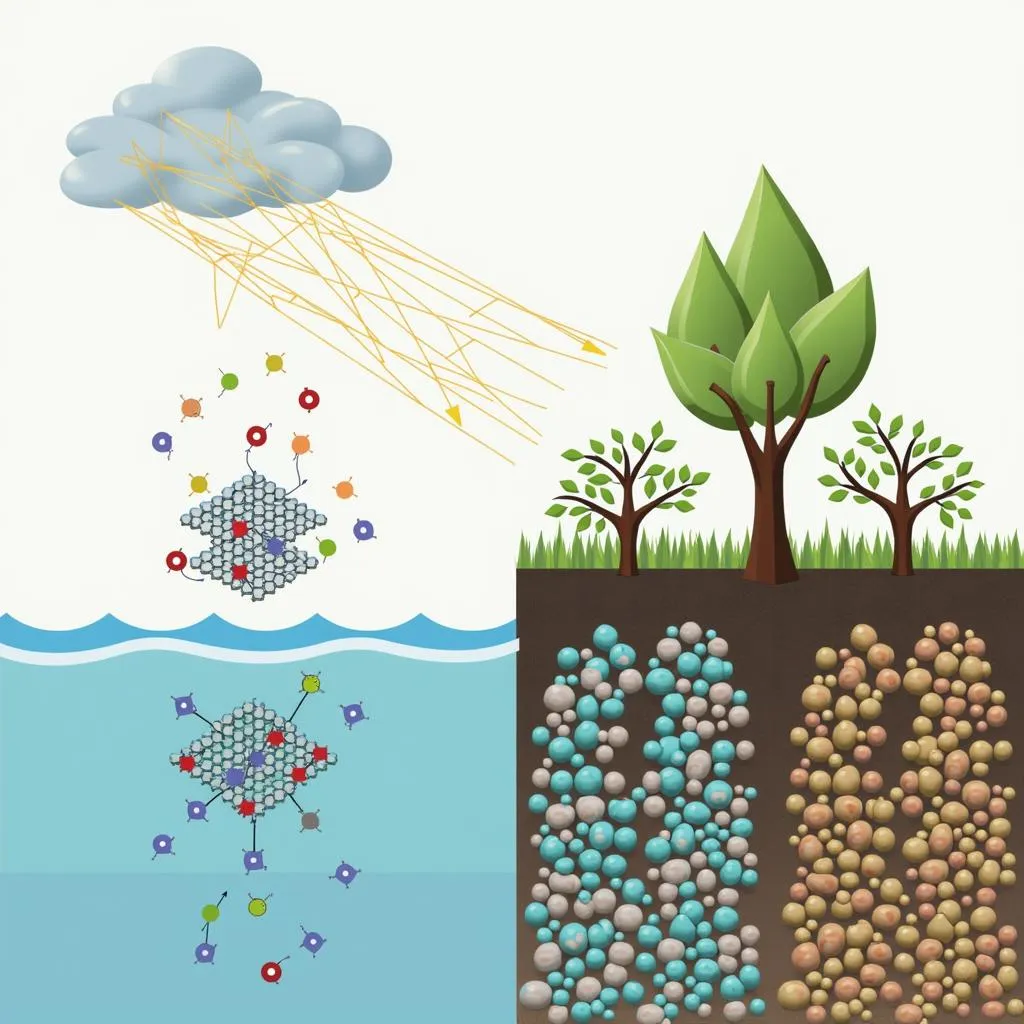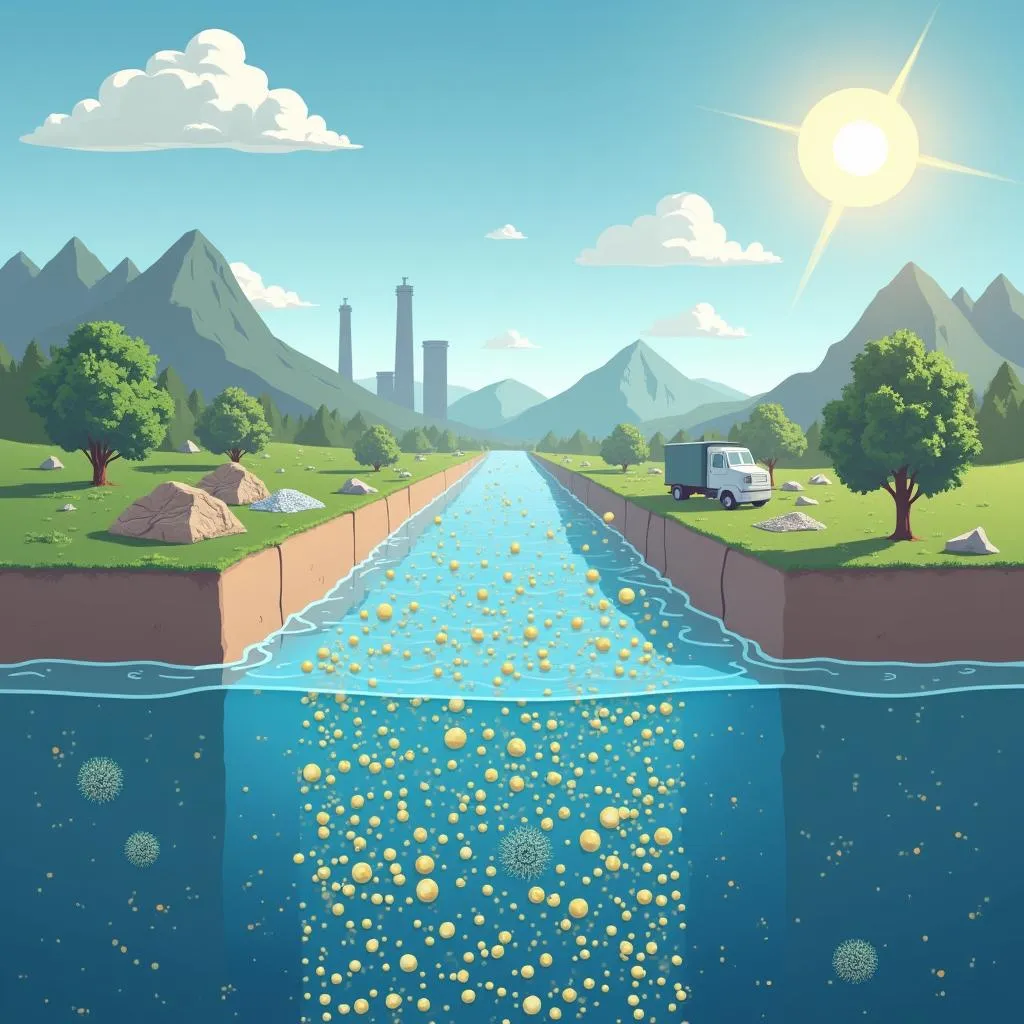The topic of Nanotechnology In Environmental Cleanup is increasingly popular in the PTE Summarize Written Text section as the significance of environmental protection grows. This concept involves using tiny particles to address pollution and restore ecosystems. In this practice test, we provide a detailed exercise to help you master this question type.
Understanding the Importance of Summarizing Nanotechnology’s Role in Environmental Cleanup
Nanotechnology has garnered attention for its significant role in combating environmental issues. It allows for precise interventions that can lead to more effective waste management, pollution reduction, and even water purification. This topic could easily appear in the Summarize Written Text task of the PTE Speaking & Writing module due to its relevance in science and technology.
In this task, you are required to read a passage and summarize it in one sentence. Your summary should be between 5 to 75 words and should include the key points from the passage.
Summarize Written Text Sample Task on Nanotechnology in Environmental Cleanup
Sample Passage
Nanotechnology, the science of manipulating materials on an atomic or molecular scale, has shown promising applications in environmental cleanup. Nanosized particles can neutralize contaminants more efficiently than traditional methods, making them a popular tool in water and soil remediation. Researchers have developed nanomaterials capable of photocatalysis, which breaks down toxic pollutants in sunlight. Moreover, nano-absorbents show high effectiveness in capturing heavy metals or other pollutants in industrial waste. Despite challenges in deploying these technologies on a large scale, such as high costs and environmental risks, the potential of nanotechnology to revolutionize pollution control cannot be overstated.
Task: Summarize the passage in one sentence. Your sentence should be between 5 and 75 words.
Model Answers According to Band Score
Model Answer for Band 90
Nanotechnology, with its nanosized particles capable of contaminant neutralization, photocatalysis, and pollutant absorption, offers innovative solutions for environmental cleanup, although challenges like costs and risks hinder large-scale deployment.
Analysis:
- Content: This answer efficiently covers all aspects of the passage: technological potential, methods (neutralization, photocatalysis), application areas (water and soil), and associated challenges (cost and risks).
- Form: The answer fits the word limit (41 words).
- Grammar: The sentence is grammatically sound and strategically uses transition words.
- Vocabulary: Advanced vocabulary related to “nanotechnology” and “pollution control” elevates the response.
- Spelling: No spelling errors.
 Nanotechnology solution for environmental cleanup with nanosized particles and pollutant absorption
Nanotechnology solution for environmental cleanup with nanosized particles and pollutant absorption
Model Answer for Band 85
Nanotechnology’s applications in environmental cleanup include pollutant-neutralizing particles, photocatalysis, and pollutant absorption, though challenges related to scaling, such as costs and risks, remain.
Analysis:
- Content: Nearly all points are covered but in less detail than the band 90 answer.
- Form: A concise summary within the word limit (26 words).
- Grammar: Correct grammatical structures used throughout.
- Vocabulary: Good use of terminology but less complex than the previous response.
- Spelling: No spelling issues.
Model Answer for Band 75
Nanotechnology helps with environmental cleanup by neutralizing contaminants and absorbing pollutants, despite facing challenges of high costs and deployment risks.
Analysis:
- Content: Key points are mentioned but lack specificity, such as the process of photocatalysis.
- Form: The sentence is within the required word count (21 words).
- Grammar: Simple but correct sentence structure.
- Vocabulary: More basic vocabulary, with some omission of technical terms.
- Spelling: Correct spelling.
 Nanomaterials used in water purification and environmental remediation
Nanomaterials used in water purification and environmental remediation
Model Answer for Band 65
Nanotechnology is helping clean the environment by dealing with pollutants, but costs and risks are still challenging.
Analysis:
- Content: The main ideas are included but lack depth.
- Form: The length is appropriate (17 words), though it could benefit from more detail.
- Grammar: This answer uses simple sentence structure.
- Vocabulary: Limited use of advanced terms.
- Spelling: No errors.
Model Answer for Band 50
Nanotechnology helps clean up pollution, but it’s expensive and risky.
Analysis:
- Content: This response is overly brief and lacking in detail, with key concepts such as specific methods being omitted.
- Form: It’s very short (10 words), thus missing critical information.
- Grammar: The sentence is grammatical but too simplistic.
- Vocabulary: Very basic, with minimal terminology related to the topic.
- Spelling: Accurate.
Vocabulary and Grammar Review
To succeed in Summarize Written Text tasks, it’s essential to know instructional vocabulary, key terms, and advanced grammar structures. Below are some critical terms from the passage and their explanations:
-
Nanotechnology /ˌnæn.oʊˈtɛk.nəˌlɑː.dʒi/: The science of working with very small materials on a nanoscale. Example: Nanotechnology has the potential to address many environmental issues by neutralizing pollutants at the atomic level.
-
Photocatalysis /ˌfoʊ.t̬oʊ.kæˈtæl.ɪ.sɪs/: A process that uses light to accelerate a reaction that breaks down pollutants. Example: Photocatalysis is effective in breaking down harmful chemicals in polluted water.
-
Remediation /rɪˌmiːdiˈeɪʃən/: The removal of pollution or contaminants from the environment. Example: Soil remediation techniques using nanotechnology are more efficient than traditional methods.
-
Nanosized /ˈnæn.oʊˌsaɪzd/: Refers to particles that are extremely small, often between 1 and 100 nanometers. Example: Nanosized particles are capable of penetrating deep into contaminated soil to remove toxins.
-
Contaminants /kənˈtæm.ɪ.nənts/: Harmful substances that pollute the environment. Example: Heavy metals and other contaminants in water can be absorbed using nanotechnology.
-
Neutralize /ˈnjuː.trə.laɪz/: To render a substance harmless or ineffective. Example: Certain nanomaterials can neutralize harmful chemicals released into the atmosphere.
-
Pollutant Absorption /pəˈluː.t̬ənt əbˈsɔːr.pʃən/: The process in which a material captures and holds pollutants. Example: Nanotechnology effectively increases pollutant absorption in industrial waste treatments.
-
Industrial Waste /ɪnˈdʌs.tri.əl weɪst/: Unwanted material produced as a by-product of industrial processes. Example: Nanomaterials can efficiently absorb pollutants from industrial waste.
-
Scaling /ˈskeɪ.lɪŋ/: Expanding a process to cover a larger area or more significant operations. Example: Large-scale implementation of nanotechnology in environmental projects faces cost challenges.
-
Deployment /dɪˈplɔɪ.mənt/: The act of installing or using new technology in real-world situations. Example: The deployment of nanotechnology in environmental cleanup efforts is still in its early stages.
Conclusion
Nanotechnology’s immense potential in environmental cleanup is an exciting and relevant topic for the Summarize Written Text task in the PTE exam. By practicing such topics, you gain a better understanding of how to concisely handle complex information. Remember, while summarizing, to capture the core message and ensure all major points are included.
If you enjoyed this exercise or have any questions about the PTE exam, feel free to leave a comment below!